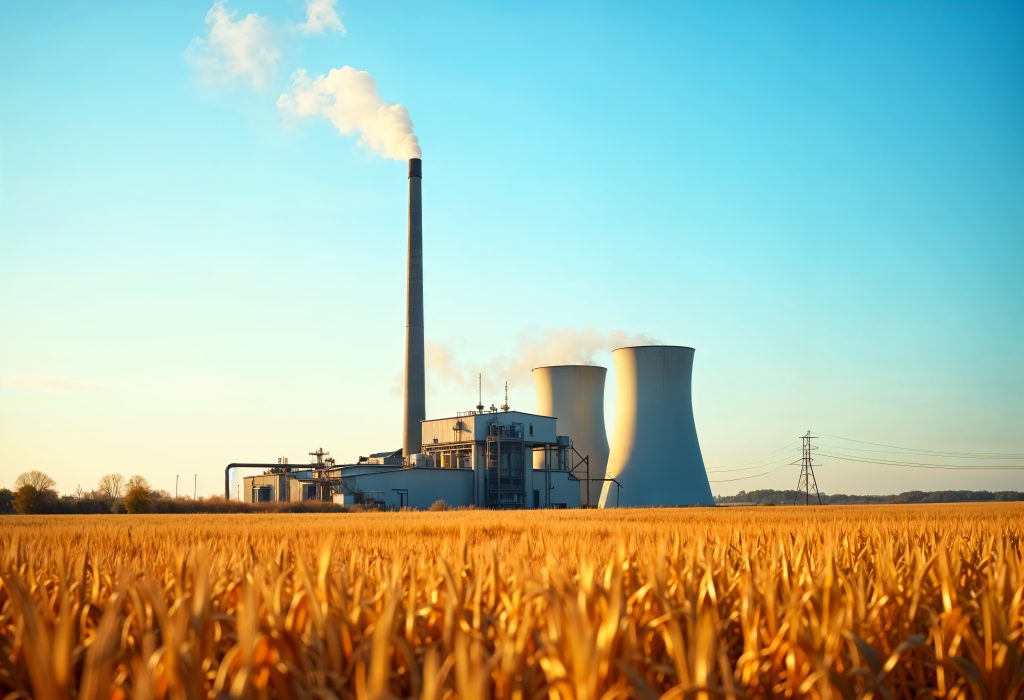Introduction
State aid is an important regulatory instrument within the energy sector, guaranteeing its effective operation and long-term sustainability. The intervention in areas where market mechanisms alone are not enough, such as phasing out coal, and services of general common interest; state aid aligns the energy sector with broader European Union policy goals, promoting stability and compliance with strategic policies[1]. Although state aid is not explicitly defined in the Treaty on the Functioning of the European Union (TFEU), Article 107(1)[2] provides indications to its scope. The practical interpretation of what is state aid is left to the Court of Justice of the European Union (CJEU) and the European Commission[3].
The importance of this case in the context of EU energy policy lies in the implications of state aid law and the transition to renewables of low-carbon energy. In particular, it highlights the position of nuclear energy, which sits on a fine line due to the environmental challenges associated with nuclear waste management while offering a unparallel ability for generating carbon-neutral energy and energy security.
This case note presents the factual and legal background of the case, followed by an analysis and discussion of one of its important findings. It concludes by referring to the significance and implications of the case.
Factual Background
The Republic of Austria brought an action against the European Commission (EC aka Commission) for the annulment of its decision on state aid measure for Hickley Point C by the United Kingdom of Great Britain and Northern Ireland (UK) stating it was compatible with the internal market and the authorization of its implementation.
The UK was still a part of the European Union until the beginning of 2020 (January 31st). The timeline of these appeals occurred between 2013-2019, with the final judgment being released on the 22nd of September 2020. Therefore, the Court of Justice of the European Union (CJEU) decisions are still relevant due to the Retained EU law, and the Northern Ireland Protocol for goods and electricity markets[4] [5].
Hinkley Point C, currently under construction in Somerset, UK, is a large-scale nuclear power station with the estimated capacity of generating around 3,200 MW (megawatts) of electrical power. Once operational it is expected to supply approximately 6 million homes, corresponding to approximately 20% of the population[6] – contributing significantly to UK’s goals to reach net-zero carbon by 2050.
UK notified the European Commission of 3 aid measures for Hickley Point C in October 2013:
- A Contact for Difference: An agreement between NNB Generation Company (NNBG) and Low Carbon Contracts Company (LCCC), guaranteeing electricity price stability;
- A Compensatory Agreement: An agreement of payment between the UK Secretary of State for Energy and Climate Change and NNBG’s investors, stating that in the event of an early shutdown of the nuclear plant due to political reasons, and if Low Carbon Contracts fails to fulfil its payment obligations, the UK government will assume responsibility for compensating the investors.
- Credit Guarantee: Credit guarantee by the UK on bonds to be issued by NNBG, to ensure the timely payment of both the principal debt and the associated interest.
Where NNB Generation Company (NNBG) is the entity responsible for the construction and eventual operation of a new nuclear power plant, while Low Carbon Contracts Company (LCCC), is a government-owned private company in the UK that plays a vital role in supporting the UK’s transition to a low-carbon energy system.
A formal investigation was placed on December 18th of 2013, and on October 8th of 2014 the EC concluded that those measures constitute State Aid and are compatible with the internal market.
Moreover, it does not adversely affect trading conditions to an extent contrary to the common interest as stated by the Republic of Austria.
On the 6th of July, the Republic of Austria filed an action for the annulment of the EC’s decision to the General Court. However, the General Court rejected all ten pleas upholding the EC’s decision.
Austria subsequently appealed the previous judgment to the CJEU, advancing 5 grounds of appeal declaring the decision was unlawful and not compatible with the internal market and environmental objectives of the EU. The appeal was rejected, upholding the Commission’s decision.
Legal Background
In the present case, the application of state aid for the generation of nuclear energy by Hickley C is the central issue. Therefore, it is essential to reference The Four Cumulative Criteria required for a measure to qualify as state aid under EU law for Article 107 of the TFEU to be applicable[7] [8]:
1st There must be intervention by the state or through state resources;
2nd It must confer a selective advantage on the recipient, which it would not have had under normal market conditions;
3rd The intervention must be liable to affect trade between Member States;
4th It must distort or threaten to distort competition.
Article 107 of TFEU addresses the rules regarding state aid within the EU. Specifically, Article 107(3)c of TFEU[9] is regarded in this case as it states “aid to facilitate the development of certain economic activities or of certain economic areas, where such aid does not adversely affect trading conditions to an extent contrary to the common interest” which is the legal basis for determining the compatibility of the aid measures with EU energy law.
Other TFEU articles are mentioned in this case:
- Article 11 [10], according to which environmental protection requirements must be integrated into the definition and implementation of EU policies and activities, in particular to promote sustainable development;
- Article 194 [11] which focuses on the EU energy policy. In particular Article194(2) paragraph 2,”Such measures shall not affect a Member State’s right to determine the conditions for exploiting its energy resources, its choice between different energy sources and the general structure of its energy supply, without prejudice to Article 192(2)(c)”.
- Article 108(3) [12];
- Article 256 [13];
The Euratom Treaty[14], which provides guidelines for nuclear research, safety, supply security, peaceful use, and cooperation under civil use.
The Principals of Protection of the Environment:
- Precautionary Principal[15] that is a strategy for approaching issues of potential harm when solid scientific knowledge is lacking;
- Polluter Pays Principle[16]. The party responsible for pollution should bear the costs of managing it to prevent damage to human health or the environment;
The Principle of Sustainability[17] which is a guiding concept aimed at ensuring that current actions do not compromise the ability of future generations to meet their own needs
The Principle of Equal treatment and Non-discrimination that ensure the promoting of fairness, justice, and equality in society.
Legal Reasoning
The Republic of Austria submitted 5 grounds of appeal of the Commission’s decision to the CJEU:
1st Ground of appeal: Nuclear Energy is Objective of common interest.
The Court interpreted that Article 107(3)(c) TFEU requires a “common interest” criterion for state aid to be declared compatible with the internal market. Furthermore, Article 1(2) of the Euratom Treaty states that the Community’s responsibility is to enhance the standard of living within Member States by facilitating the development of nuclear energy and the grant of state aid does not oppose these objectives.
The Court also reaffirmed Member States’ freedom to choose their energy mix, and under Article 194(2) TFEU and the Euratom Treaty, that there is no conflict between the objectives of Euratom Treaty and the fundamental principles of EU environmental law. Consequently, these environmental principles cannot serve as a legal barrier to the granting of state aid for nuclear energy.
2nd Ground of appeal: Competitive distortion for the internal market.
The Court determined that the competitive impacts of the aid were appropriately evaluated and considered acceptable under Article 107 TFEU, as the aid facilitates the development of nuclear energy generation, thereby satisfying the condition for compatibility with the internal market. Moreover, the Court found that the aid did not result in excessive distortion of competition and was justified as a necessary measure to achieve the UK’s energy security objectives.
3rd Ground of appeal: Proportionality of the aid measures and the environment.
The Court found the proportionality of measures acceptable, as the Commission had analysed its necessity to achieve the UK’s energy objectives. Notably, under Article 107(3)(c) TFEU, the protection of the environment is not considered as a component of the internal market. Furthermore, the Court reaffirmed the United Kingdom’s discretion to determine its energy mix in accordance with Article 194(2) TFEU.
4th Ground of appeal: Incompatibility with internal market – operating aid.
Nor Commission nor the General Court are required to define the aid as “investment aid” or “operation aid”. However, if the aid were classified as “operating aid,” it would not satisfy the conditions of Article 107(3)(c) TFEU, as it refers to facilitating the development of economic activities rather than maintaining the status quo. Furthermore, an analysis of the judgment under appeal indicates that the aid was interpreted as “investment aid.”
5th Ground of appeal: Aid elements were determined insufficiently
The Court did not find that the Commission passed a wrong judgment regarding the Guarantee Notice, which requires that the borrower must not be in a situation of financial difficulty, as no plausible evidence of such was provided. Furthermore, the revenue generated regarding the contract of difference, in conjunction with the compensatory agreement, is just a risk mitigation measure if the project fails. Therefore, the Court upheld the Commission’s ruling.
Critical Assessment
This critical analysis will focus on Austria’s position regarding Article 107(3)(c) TFEU, which allows state aid as long as it “(…)does not adversely affect trading conditions to an extent contrary to the common interest“[18], which is one of key legal basis for Austria’s first, second, and third grounds of appeal highlighting its importance to this case.
In 2014, the year of this case, around 80%[19] of Austria’s electricity was produced via renewables, and this has increased over the years. It’s main source of renewable energy is Hydropower[20]. Hydropower is a more reliable energy source in terms of its ability to produce energy as it is possible to control the energy output and inject it into the grid, and it is a more reliable energy source over time[21] when compared to other conventional sources. This provides a great advantage in the renewable sector. In 2014, Austria exported electricity to 10 European countries[22] through a well- integrated and cross-border energy trading system. This reflects Austria’s strategic positioning in the European network which is currently ranked as 6th place.
However, with the grant of state aid to the production of nuclear energy it would indirectly impact the competitiveness of Austria’s renewable energy sectors at both national and international level, as it most likely would lower the energy prices in Europe. For better context, while a large hydropower plant can typically generate an average of 100 megawatts (MW) of energy, a typical nuclear reactor can generate 1 gigawatt (GW), which is 10 time the energy output of hydropower sources[23] [24]. This would jeopardize Austria’s strategic position in the renewable energy sector, as subsidizing nuclear power could make it more attractive in the EU grid that might make Austria’s Cross-border energy trading face challenges.
Moreover, only approximately 22% of UK’s production was from renewable energy in 2015 – mainly windfarm, solar and biomass –where natural gas functioned as the principal baseline energy source, providing the necessary stability to ensure a reliable energy grid[25]. Nuclear energy, while raising concerns about waste management, offers a clean and stable source of power with no GHG emissions, aligning with the goals of the 2008 Climate Act[26]. One may discuss the environmental impact of nuclear waste management but that is another issue where the pros and cons must be analysed separately and is not the point of this paper.
Under Article 107(3)(c) TFEU, ‘common interests’ represent objectives that go beyond national priorities, reflecting broader EU goals such as sustainability, energy security, and affordability. While the article mentioned lacks a precise definition, the Commission has the flexibility to make the decision of balancing collective benefits against potential distortions to competition. Thus, subsidizing Hickley C can be seen as promoting economic development of the UK and other Member States, contributing to environmental goals, and improving energy security. These are the key points to the “common interest” held by Article 107(3)(c) TFEU. Consequently, this alignment with the court’s interpretation makes Hinkley Point C eligible for state aid.
Conclusion
The case provides a valuable clarification on the application of State Aid in financing energy sources such as nuclear power, that have a negative environmental connotation. It highlights the balance between collective benefits, such as energy security and carbon-zero emissions, and mitigating potential distortions to competition within the internal market. It is crucial that these measures are compliant to the principles of proportionality and aligned with sustainability goals and fair market competition.
[1] Kim Talus, Introduction to EU Energy Law (Oxford University Press 2016) 110.
[2] Consolidated Version of the Treaty on the Functioning of the European Union [2008] OJ C115/47 https://eur- lex.europa.eu/legal-content/EN/TXT/HTML/?uri=CELEX%3A12008E107 Accessed: 17 December 2024.
[3] Kim Talus, Introduction to EU Energy Law (Oxford University Press 2016) 108.
[4] Council of the European Union, ‘The Protocol on Ireland and Northern Ireland Explained’ (Council of the European Union, 2024) https://www.consilium.europa.eu/en/policies/the-protocol-on-ireland-and-northern-ireland-explained/ accessed 17 December 2024.
[5] Department for Business and Trade, ‘Retained EU Law Dashboard’ (UK Government, 2024) https://www.gov.uk/government/publications/retained-eu-law-dashboard accessed 17 December 2024.
[6] EDF Energy, ‘Hinkley Point C’ (EDF Energy) https://www.edfenergy.com/energy/nuclear-new-build-projects/hinkley-point-c Accessed: 17 December 2024.
[7] Kim Talus, Introduction to EU Energy Law (Oxford University Press 2016) 106.
[8] European Commission, ‘Notion of State Aid’ (EUR-Lex, 2024) https://eur-lex.europa.eu/EN/legal-content/summary/notion-of- state-aid.html Accessed: 18 December 2024.
[9] Consolidated Version of the Treaty on the Functioning of the European Union [2008] OJ C115/47, art 107(3)(c)
[10] Consolidated Version of the Treaty on the Functioning of the European Union [2016] OJ C202/1, art 11.
[11] Consolidated Version of the Treaty on the Functioning of the European Union [2012] OJ C326/47, art 194.
[12] Consolidated Version of the Treaty on the Functioning of the European Union [2008] OJ C115/89, art 108.
[13] Consolidated Version of the Treaty on the Functioning of the European Union [2008] OJ C115/159, art 256.
[14] Council of the European Union, ‘Treaty on the European Atomic Energy Community (Euratom)’ (EUR-Lex, 2024) https://eur- lex.europa.eu/EN/legal-content/summary/treaty-on-the-european-atomic-energy-community-euratom.html Accessed: 19 December 2024.
[15] Council of the European Union, ‘Precautionary Principle’ (EUR-Lex, 2024) https://eur-lex.europa.eu/EN/legal- content/glossary/precautionary-principle.html Accessed: 19 December 2024.
[16] OECD, The Polluter Pays Principle: Definition, Analysis, Implementation (OECD Publishing 2008).
[17] Michael Decleris, The Law of Sustainable Development: General Principles (European Commission 2000).
[18] Consolidated Version of the Treaty on the Functioning of the European Union [2008] OJ C115/47, art 107(3)(c).
[19] Macrotrends, ‘Renewable energy statistics for Austria’ https://www.macrotrends.net/global- metrics/countries/AUT/austria/renewable-energy-statistics Accessed: 1 December 2024.
[20] E-Control, ‘Electricity Statistics Brochure 2018’ (2018) https://www.e-control.at/documents/1785851/1811597/e-control- statistikbroschuere-2018-englisch.pdf/ee740431-1047-e373-d9a9-324406ffaa8b?t=1542042035952 accessed 19 December 2024.
[21] US Department of Energy, ‘Benefits of Hydropower’ https://www.energy.gov/eere/water/benefits-hydropower accessed 19 December 2024.
[22] Hannah Ritchie and Max Roser, ‘Energy in Austria’ (Our World in Data, 2024) https://ourworldindata.org/energy/country/austria Accessed: 16 December 2024.
[23] US Department of Energy, ‘Types of Hydropower Plants’ (Energy.gov, 2024) https://www.energy.gov/eere/water/types- hydropower-plants Accessed:17 December 2024.
[24] US Department of Energy, ‘Nuclear Power is the Most Reliable Energy Source and It’s Not Even Close’ https://www.energy.gov/ne/articles/nuclear-power-most-reliable-energy-source-and-its-not-even-close Accessed: 16 December 2024.
[25] Department for Business, Energy & Industrial Strategy, ‘Renewable Energy in 2015’ (2016) https://assets.publishing.service.gov.uk/government/uploads/system/uploads/attachment_data/file/532963/Renewable_energ y_in_2015.pdf Accessed: 17 December 2024.
[26] Climate Change Act 2008 (c 27) https://www.legislation.gov.uk/ukpga/2008/27/contents Accessed: 17 December 2024.



